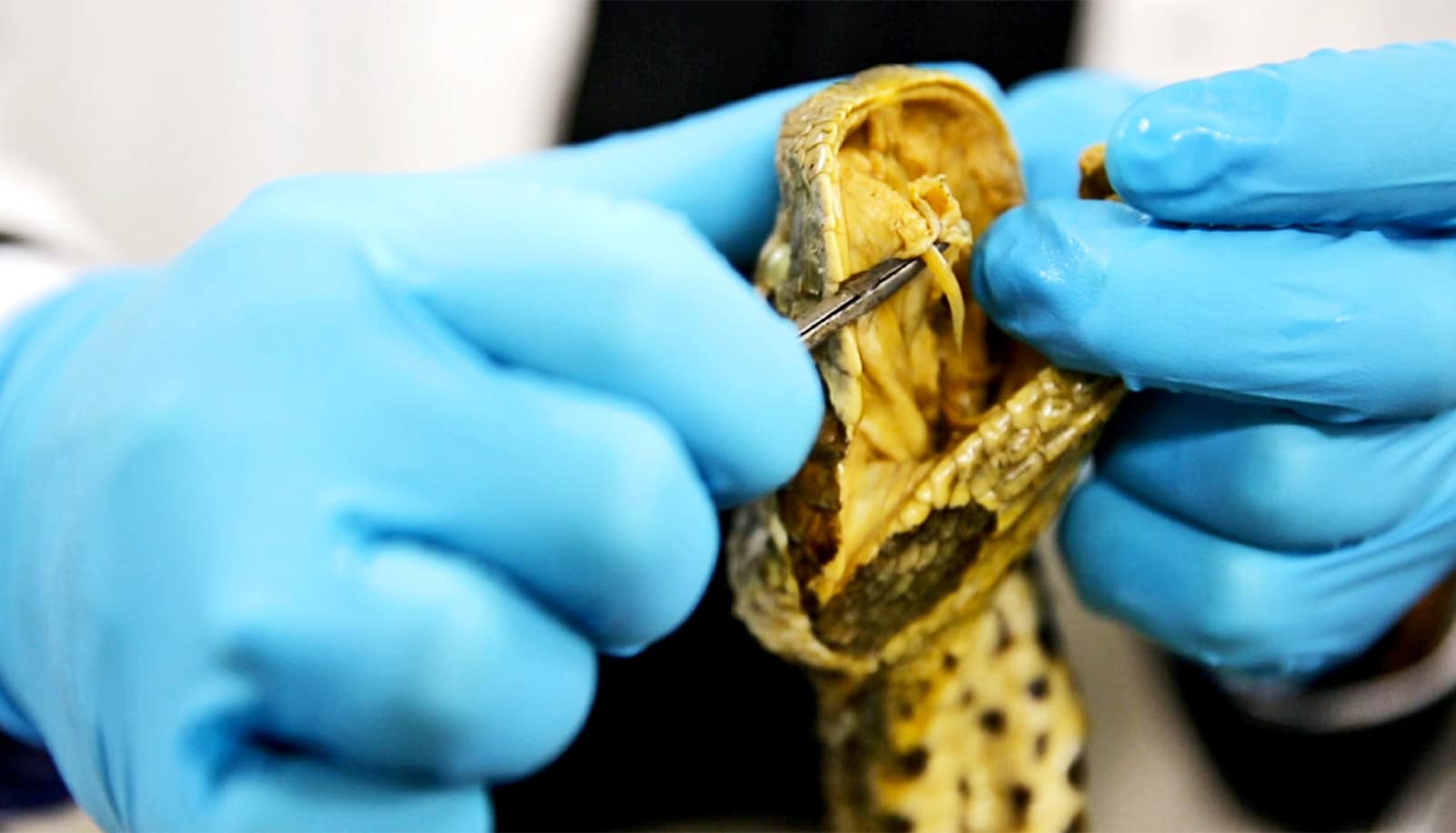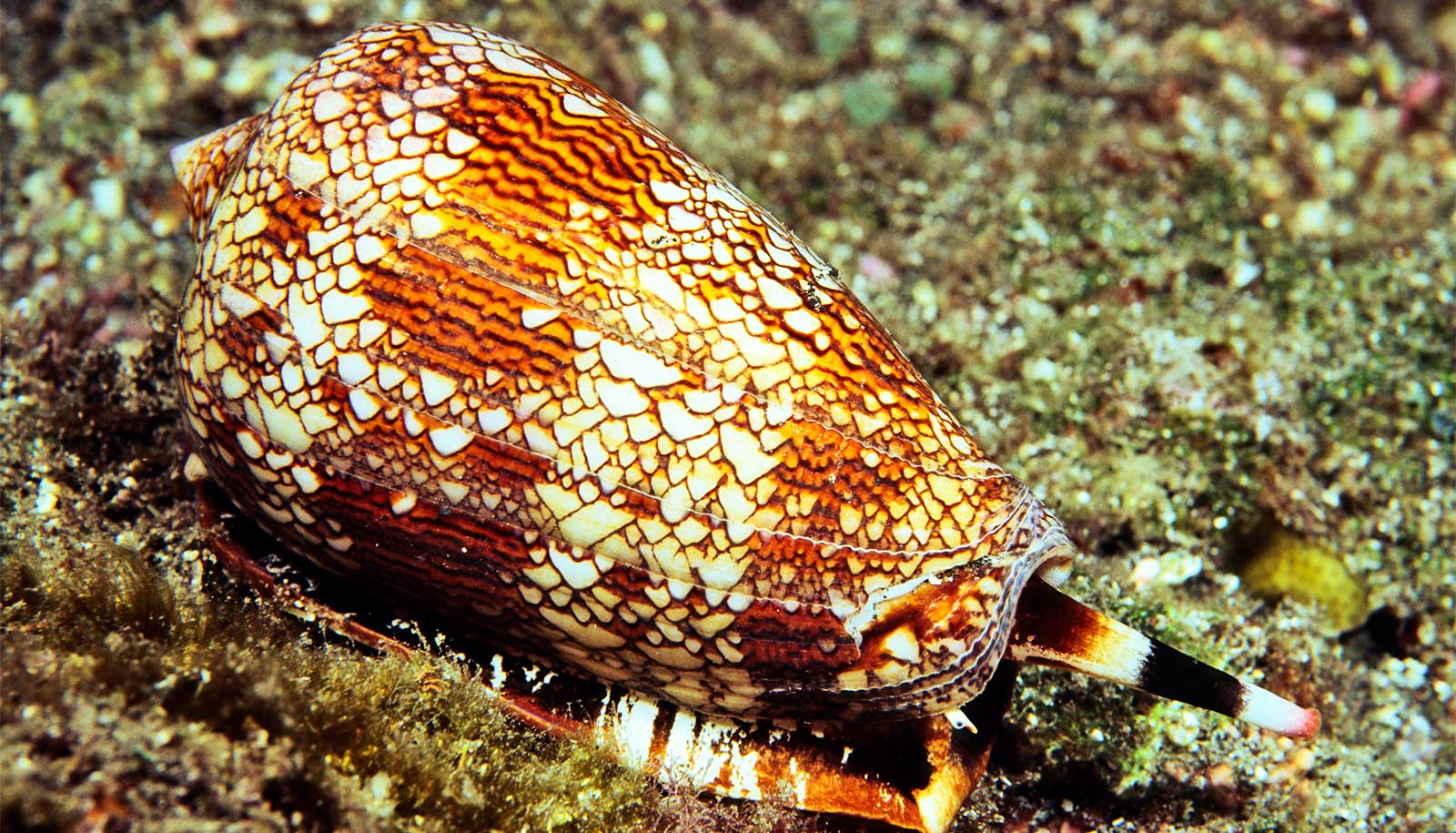
(Credit: Anton Willemann)
New antivenom would be cheap, fast, and easy to make
A new kind of antivenom would be far cheaper and easier to produce than current versions and super simple for people who've been bitten to use anywhere.
A new potential antivenom would be simple to make, inexpensive to produce, and something that anyone, anywhere can use.
Amputations, deformed bones, disfigured skin, and, at worst, death. These are the potential consequences of a venomous snake bite.
For millions of people living in low-income countries deadly snake bites are an everyday occurrence, and the nearest health clinic or hospital can be miles away. Making matters worse, roads are often impassable in these parts of the world, many don’t own a vehicle, and the price of antivenom can run several hundred dollars (a fieldworker makes $1-2 a day).
The World Health Organization (WHO) has classified antivenoms for venomous snake bites as an official shortage.
The new project aims to try and change that. Brian Lohse and collaborators have just published a study in the Journal of Medical Chemistry proving that the concept behind their alternative antivenom strategy appears to work on cobra venom.
Furthermore, through a start-up company that shares the antivenom’s name, Lohse, associate professor and project manager in the drug design and pharmacology department at the University of Copenhagen, has filed a national patent on a peptide which binds and neutralizes a particular type of toxin found in the venom of 75%of all venomous snakes.
“We have been working on an alternative type of antivenom that is much cheaper than traditional, antibody-based antivenom,” Lohse says.
“If it becomes a future product, it will fit in your pocket, and it can be used by anyone, anywhere. The idea is that it can be injected using an automatic injection unit, precisely like the ones used by diabetes patients , that is, directly into the muscle or fold of the skin at the site of the bite.”
WHO estimates that more than 400,000 people each year suffer from serious consequences of a snake bite and 140,000 die. Among other things, this is due to the fact that antivenom is expensive and hard to for the people who need it to access.
Today, the only treatment available for snake bites is antibody-based antivenom, and it saves many lives each year. But the antibodies are produced in live animals, horses for example, a process that can take up to 18 months. And as it requires several hundred venomous snakes and several hundred horses to produce enough antibodies to support the demands in a region, it’s a slow and cost-intensive process. On top of this, it’s hazardous for the animal keepers, who often are bitten themselves.
Once researchers develop the antibody-based antivenom, it must then be injected into the veins of the bitten person. This requires health care training, and when the nearest clinic is located far away from the place of the bite, things are likely to end in disaster, Lohse says.
“A lot of people die before they reach a place for treatment, because the snake venom is free to spread in the body for several hours or even days. Add to this the many potential side effects of the treatment and the fact that high-quality products with hardly no side effects can cost up to $2,000 per dose. This creates a destructive market of poor quality counterfeits, sold as cheap antivenom medicines. These poor-quality products can cause an allergic shock that may kill the patient,” he says.
The fact that antivenom for an Indian Cobra, for instance, won’t necessarily work on its African Cobra-cousin, further limits traditional antivenom treatment. Unlike antibodies for antivenom, the new version only takes one day to synthesize and workers can produce it in a standard chemistry laboratory.
“Right now we are testing the stability of the active substances in our antivenom, and the tests are showing good results. Stability is important if we want people to be able to carry the product in their pocket, but also if we want to avoid the need for cooling,” Lohse says.
“The fact that our potential antivenom can be used right away (in the jungle or bush) buys the patient life-saving time. When you are dealing with snake venom it is important to prevent the venom from spreading further.
“Therefore, the faster you are able to neutralize it, the better are the patient’s chances of survival and minimizing sequelae. Nevertheless, a snake bite is a serious matter, and the patient should always go to the nearest hospital, even after having used our future Serpentides antivenom, whose main objective is to limit the spread of venom in the muscles into the veins,” he says.
The researchers, including collaborators from the Technical University of Denmark and the University of Münster have completed a proof of concept in vitro study, which showed that these peptides can inhibit cobra venom, which is a quick-acting neurotoxin.
“Publications and patents are the easy part; we got that in the bag. Now comes the real challenges,” Lohse says.
Source: University of Copenhagen
The post New antivenom would be cheap, fast, and easy to make appeared first on Futurity .
Share this article:
This article uses material from the Futurity article, and is licenced under a CC BY-SA 4.0 International License. Images, videos and audio are available under their respective licenses.
Related Articles:
Indian cobra genome could lead to better anti-venom
Jan. 7, 2020 • futurityDeadly snail venom could make diabetes medicines better
Sept. 17, 2024 • futurityLinks/images:
- https://doi.org/10.1021/acs.jmedchem.0c01202
- https://www.futurity.org/blood-sugar-diabetes-insulin-2364692-2/
- https://www.futurity.org/snakebites-who-strategy-1990682/
- https://healthsciences.ku.dk/newsfaculty-news/2020/11/deadly-snake-bites-danish-researchers-present-potential-new-antivenom/
- https://www.futurity.org/venom-antivenom-snakes-bites-2478742/
- https://www.futurity.org


